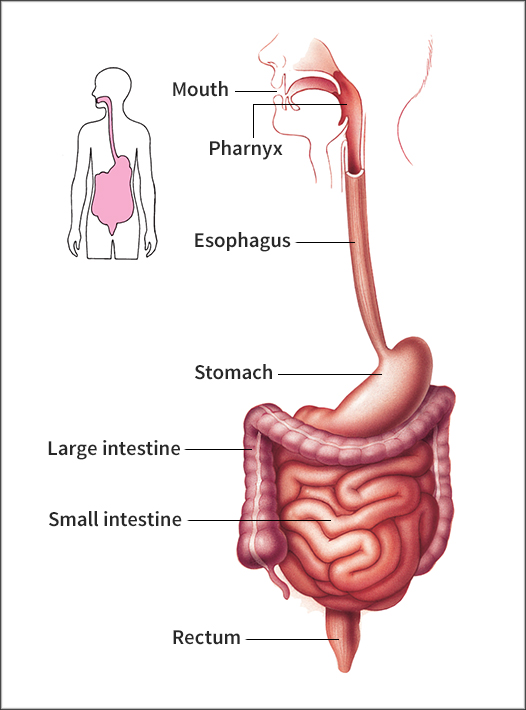Alimentary canal is a long tube through which food is taken into the body and digested. In human beings, this passage is about 30 feet (9 meters) long. Animals that eat meat usually have shorter alimentary canals than animals that eat grass. The alimentary canal begins at the mouth, and includes the pharynx, esophagus, stomach, small and large intestines, and rectum.

When a person swallows food, muscles of the pharynx push the food into the esophagus. The muscles in the esophagus walls respond with a wavelike contraction called peristalsis. At the same time, the lower esophageal sphincter relaxes, allowing the food to pass down to the stomach. In the stomach, fluids lubricate and partially digest the food. The partially digested food is called chyme. Contractions of the stomach mix and grind the food into a liquidlike mixture that contains small particles. This mixture is emptied into the small intestine. There, juices from the pancreas, liver, and intestine wall continue the process of digestion. The intestine squeezes the chyme back and forth to mix it thoroughly. The frequency and pressure of these contractions varies and keeps the chyme moving through the intestine.
Most of the food elements in the digested food are absorbed into the bloodstream through the small intestine. The intestine is lined with a mucous membrane made up of tiny fingerlike projections called villi. The villi increase the area through which absorption can take place. Soluble parts of the chyme pass through the small intestine into the bloodstream, and are carried to all parts of the body. The water and salts that remain are absorbed in the large intestine. The remaining solid wastes, called feces, are mixed with bacteria. The feces pass out of the body through the rectum in a process called defecation.
